Some places of interest in Queensland and beyond.
March 2018
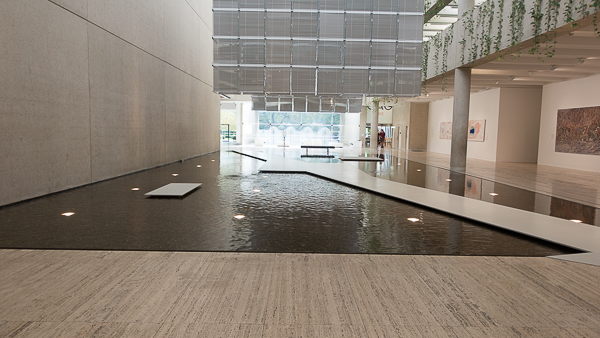
Click to enlarge
On entering the Queensland Art Gallery from either the Melbourne Street entrance of the Stanley Place entrance, the most prominent and striking aspect of the interior is immediately apparent—the Water Mall. The Water Mall extends beyond the gallery space to the Pelican Plaza on the south-east and the Sculpture Courtyard on the north-west. The Water Mall is enhanced by fountains, sculpture and two waterfalls at each end. The waterfalls, comprising crafted granite tiles, were designed by Robert Woodward. Woodward was also responsible for the Dandelion fountains at the north western end. Five cast bronze Pelicans by Queensland sculptors Leonard and Kathleen Shillam are located in the Water Mall on the south-eastern side of the Art Gallery.
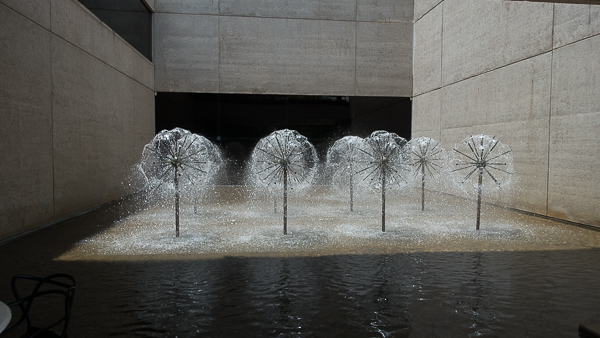
Dandilion fountains
The inclusion of a substantial water feature within the art gallery was strongly resisted by gallery staff in the planning process. They were concerned about the potentially increased humidity, but the architect Robin Gibson managed to persuade the gallery staff and design in the internal section of the water mall with minimal flow and disturbance.
The Water Mall is a remarkable achievement and has constantly prompted accolades from visitors since its opening in 1982.

Waterfall on north-west end of Water Mall
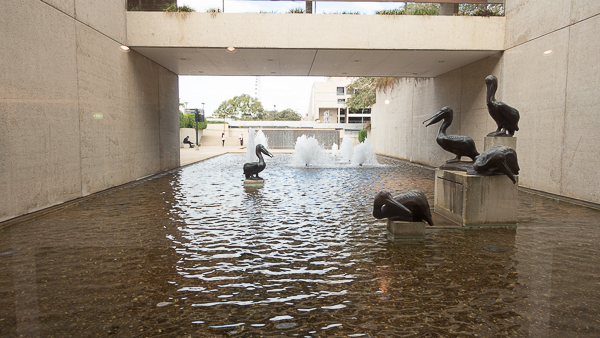
Pelican plaza
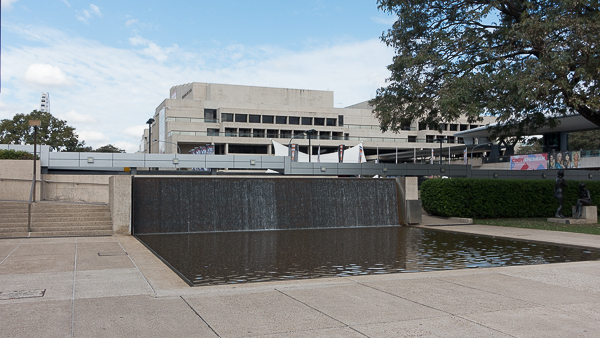
Southeastern waterfall and pond
February 2018
South Bank is arguable Brisbane’s best known and recognised destinations with more than 5 million visitors annually. A widely held view is that South Bank developed in response to the success of Expo 88. Public pressure demanded that the space on the banks of the Brisbane River should remain public. But the idea of converting the wharves, warehouses and factories on the south bank into open space was not new.
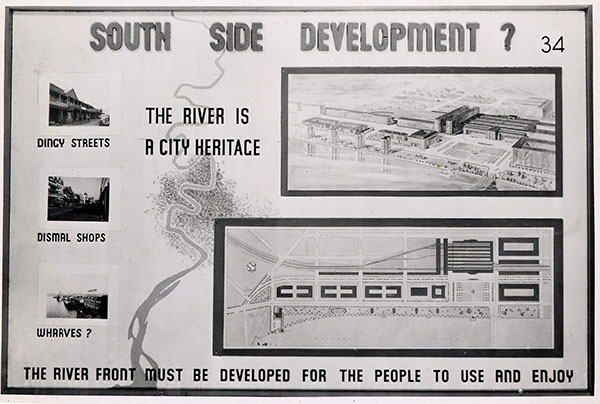
Town Planning Exhibition City Hall 1994, BCC Archives
Click to large
In 1944, a Town and Home Planning exhibition was held in the Brisbane City hall, sponsored by the Ministry of Post-War Reconstruction, the Brisbane City Council and the School of Architecture, University of Queensland. One panel was devoted to South Side development with the key theme: “The river front must be developed for the people to use and enjoy”. The drawings depict extended areas of park and residential? buildings.
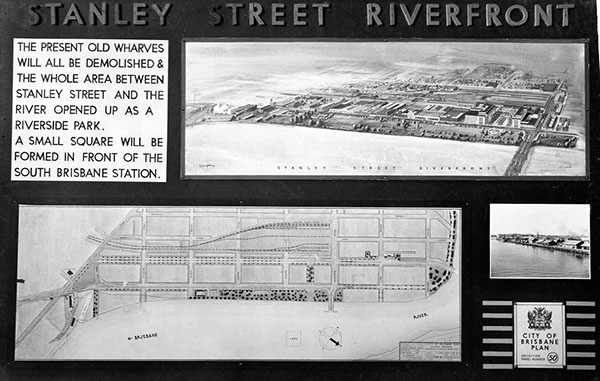
Town Planning Exhibition 1948, BCC Archives
Click to large
A similar exhibition was held in 1948. Again it included a panel of images and drawings on the redevelopment of the Stanley Street riverfront. It declared that the ‘present wharves will all be demolished and the whole area between Stanley Street and the river opened up as a riverside park. A small square will be formed in front of the South Brisbane Station.
While these ideas did not materialise precisely as planned, the concept of extended open space did – an unusual example of where a good idea did come to fruition.
February 2018
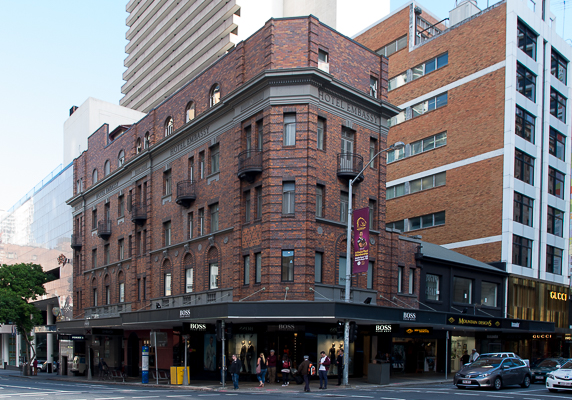
The Embassy Hotel on the corner Edward and Elizabeth streets, Brisbane was constructed in 1928-9. It was designed by architect JP Donoghue and is a very 1920s hotel There are three defining characteristics that distinquish this hotel as of the 1920s era and which sets it apart from earlier hotels in Brisbane
The architectural style
The building is in the Commercial Palazzo style which is characterised by base (ground floor), shaft (levels 1-3 and cornice.
Cantilevered awning
In 1922, the Brisbane City Council adopted a policy that all new awnings over footpaths in the principal business streets were to conform to the cantilevered design. (Telegraph 12 November 1922). Consequently, a defining feature of 1920s hotels in the Brisbane CBD was the cantilevered awning. While the cantilevered awning was a distinctive feature of 1920s hotels in the CBD, it also had other consequences for hotel design. Until this time, hotels had awnings supported by posts with verandahs on the upper levels. Verandahs on the upper levels was very typical not only of hotels in the Brisbane CBD but throughout Queensland. No more in Brisbane, at least after 1922.
The lift and high rise
The Embassy Hotel was originally of four storeys ( a fifth was added in the 1950s). he inclusion of a lift in the Embassy Hotel is also a distinctive element of 1920s hotels. Brisbane CBD. Hotels built prior to World War 1 were generally of one or two storeys. Lift technology was not used extensively in any buildings in Brisbane prior to World War 1. In the 1920s, multi-storey buildings became more common and lifts were an integral part of these buildings. as in the Embassy Hotel.
Location
February 2018
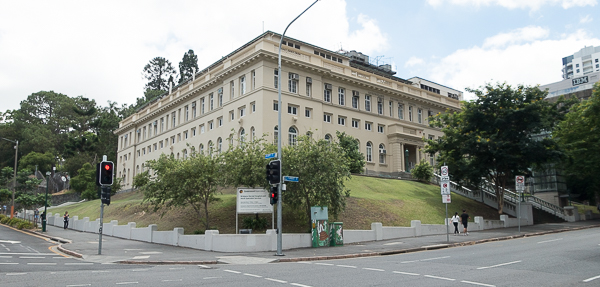
The Brisbane Dental Hospital is located prominently on the corner of Turbot and Albert streets, Brisbane. To the casual observer, there is nothing unusual about this well designed and substantial building. It was erected in 1938 -1941 as the main public dental hospital in Brisbane and the University of Queensland Dental College. But the building has some secrets that are clearly observable from the outside.
First, why is the building located well above the level of Turbot and Albert streets. It is clear that substantail excavation was necessary to provide the level ground on which the building now sits. But why not excavate to the level of the footpath to make the building readily accessible to the public. The simple answer – it wasn’t possible. The building sits over the railway tunnel from Roma Station to Central Station and could not have been any lower. This situation presented a major A major challenge for the design and construction of the building. Bridging the tunnel necessitated supporting the building of 5000 tons on six special concrete beams. In addition the problem of vibration was also an issue for the architects and engineers which was overcome by placing ‘special anti-vibration footings which acted like shock-absorbers at the base of the steel stanchions that rest on the beams’. (The Telegraph, 28 March 1941)
Second, look closely at the windows on the front and side. Yes, the windows for the ground floor and first floor are obvious, but what of the series of smaller windows between the two levels. The building was constructed with a mezzanine level to accommodate ducting for airconditioning. This was the first government building in Queensland to be fully air-conditioned. The very substantial plant was located on the roof and ducted to the mezzanine level and to the basement.
Location
May 2014
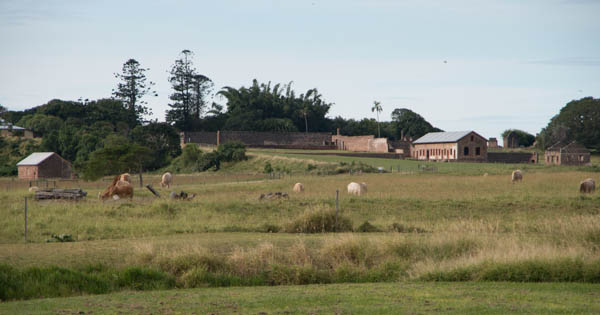
St Helena Prison was opend in 1865 as a result of overcrowding in the Petrie Terrace gaol. Farming was a major activity within the prison including cropping, dairying, cattle and sugar. A lime kiln was also part of the prison’s operations.
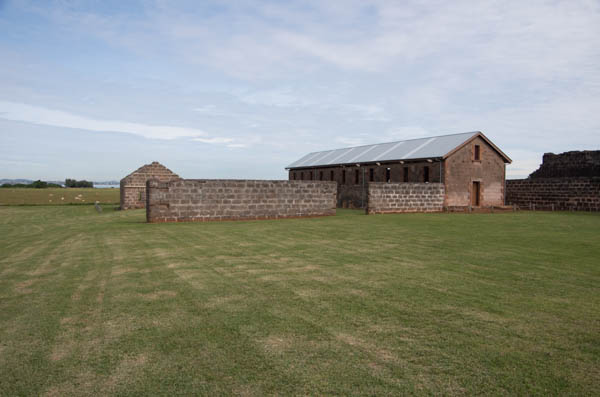
Remnants of prisoners barracks
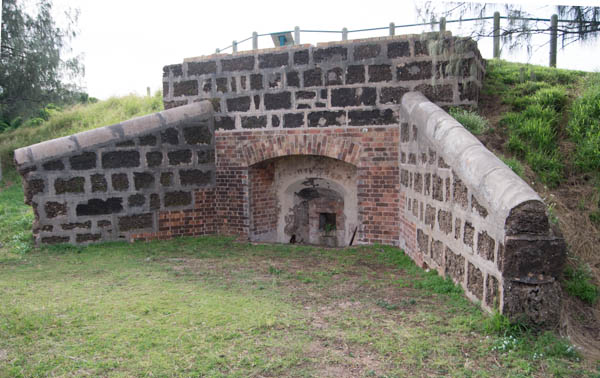
Lime kiln on the southern end of the island.
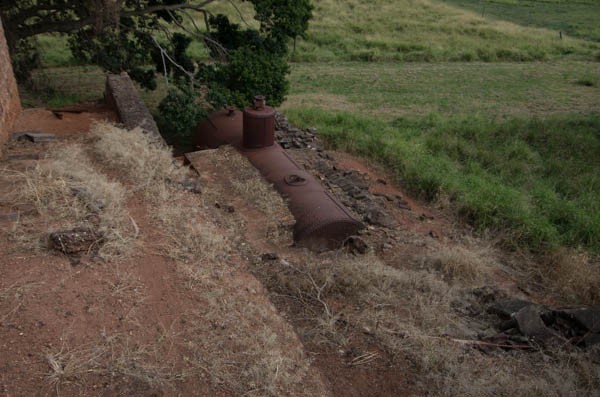
Remnants of sugar mill
Location













